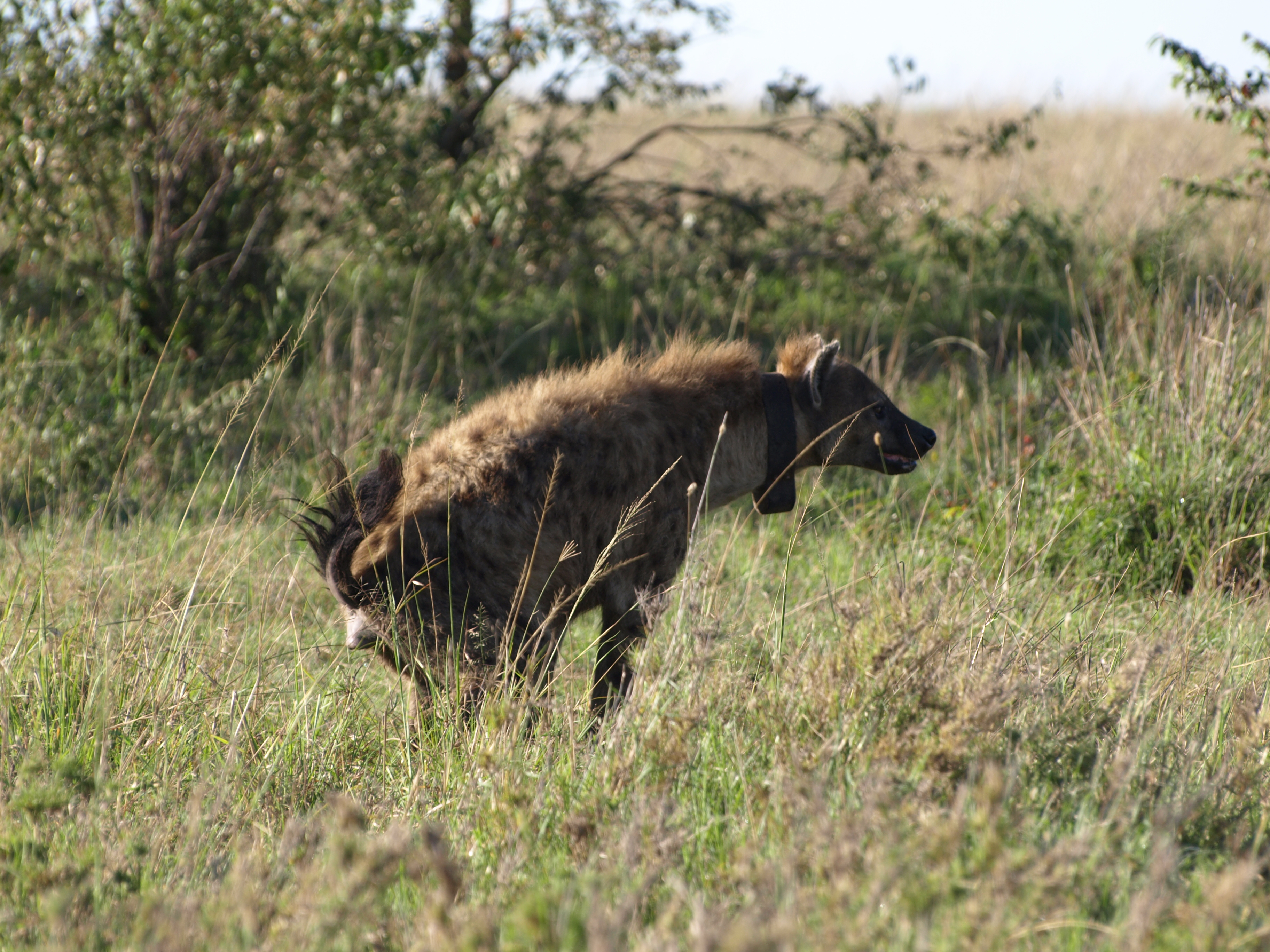Bacteria Control Hyena Communication

To communicate with each other, hyenas smear pastelike secretions on grasses from a fist-size gland beneath their tails. Other hyenas that sample these leavings can sniff a wealth of information, including the animal's sex, social status, willingness to mate and more.
But the hyenas themselves do not produce these scents — they are actually the product of bacteria that live in the animals' scent glands, a new study shows. As bacterial communities within scent glands change and evolve, so do the odiferous compounds that waft forth, said Kevin Theis, lead author of the study and an ecologist at Michigan State University.
"It's an extremely important study showing the role of bacteria mediating interactions between mammals," said David Hughes, a researcher at Penn State who wasn't involved in the study. "Only now are we discovering the role of what we think of as inconsequential passengers — the bacteria — and how important they are."
In the study, published today (Nov. 11) in the journal Proceedings of the National Academy of Sciences, Theis and colleagues collected pastes from striped and spotted hyenas in various locations in Kenya. They then took the material back to Michigan State, where they identified the types of bacteria by looking at their genes, and analyzed the chemical odors with a technique called mass spectrometry. Hyena paste smells a bit like wet mulch, although others have described it as smelling like "cheap soap," Theis told LiveScience.
The research suggests that many mammals, like hyenas, communicate via bacterial secretions, Theis said. That raises the question — how much control do hyenas have over their own bacterial communities? Are hyenas — and other mammals, perhaps even humans — "at the mercy" of their microbial hosts? The scientists don't yet know, although Theis speculated that hyenas' bodies do have a certain amount of control over their own bacteria and what they are "saying," perhaps influenced by the types of enzymes and proteins excreted into scent glands, he added.
The result serves as another example of how important animals' microbial communities are to their well-being, Hughes said. "We often look at hyenas as one organism," Hughes said. "But it's not an organism, it's a collection of genes that belong to the hyenas and the microbes. And that's true for hyenas, humans, aphids — wherever we look, it's a collection of organisms." [5 Surprising Facts about Your Microbiome]
Studies of the microbiome are beginning to revolutionize the study of animals and their behavior, Hughes said. And this extends to humans, as well, considering that the human microbiome — all the microbes that live within the body — contains 100 times more genes than the human genome itself, Hughes added.
Get the world’s most fascinating discoveries delivered straight to your inbox.
Hughes studies how certain fungi can take over the bodies of insects, for example creating zombie ants. It's easy to see how important and drastic the effects of these microbes are, Hughes said. However, "hidden manipulators," like microbes in hyena scent glands, likely also have some degree of control over their hosts' behavior, but it's not yet clear how much, he added.
Email Douglas Main or follow him on Twitter or Google+. Follow us @livescience, Facebook or Google+. Article originally on LiveScience.



